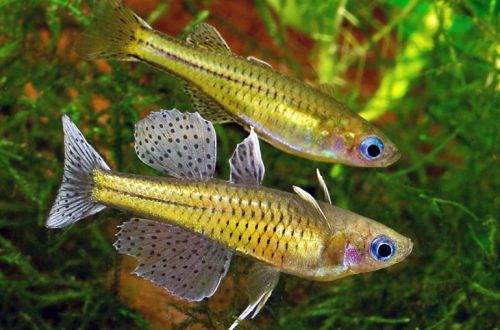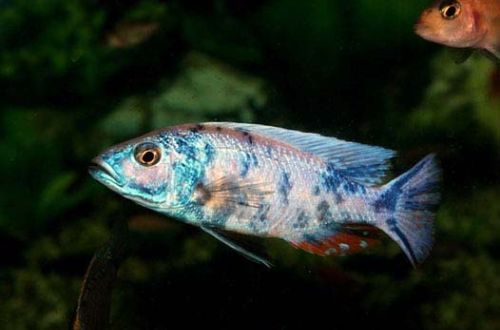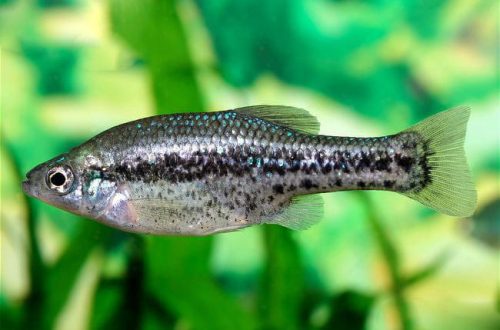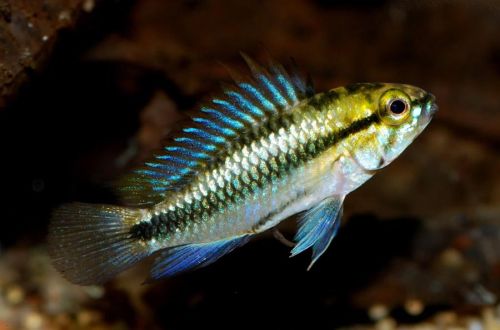
Apistogramma three-stripe
Apistogramma trifasciata, scientific name Apistogramma trifasciata, belongs to the Cichlidae family. For experienced aquarists, keeping these fish will not cause problems. They are quite unpretentious, easy to breed and can get along with other types of fish, including those from other continents.

Contents
Habitat
It comes from South America from the territory of Paraguay and southern Brazil. Inhabits the basin of the Paraguay River of the same name, Guapore, as well as the middle reaches of the Parana. Inhabits small streams and channels flowing under the canopy of the tropical forest. The channels usually contain a large number of snags, and the bottom is littered with fallen tree leaves.
Brief information:
- The volume of the aquarium – from 40 liters.
- Temperature – 20-25°C
- Value pH — 5.0–7.0
- Water hardness – 0–10 dGH
- Substrate type – sandy
- Lighting – subdued
- Brackish water – no
- Water movement is weak
- The size of the fish is 4–5 cm.
- Food – any food
- Temperament – conditionally peaceful, males are territorial during spawning
- Keeping in a group with one male and several females
Description
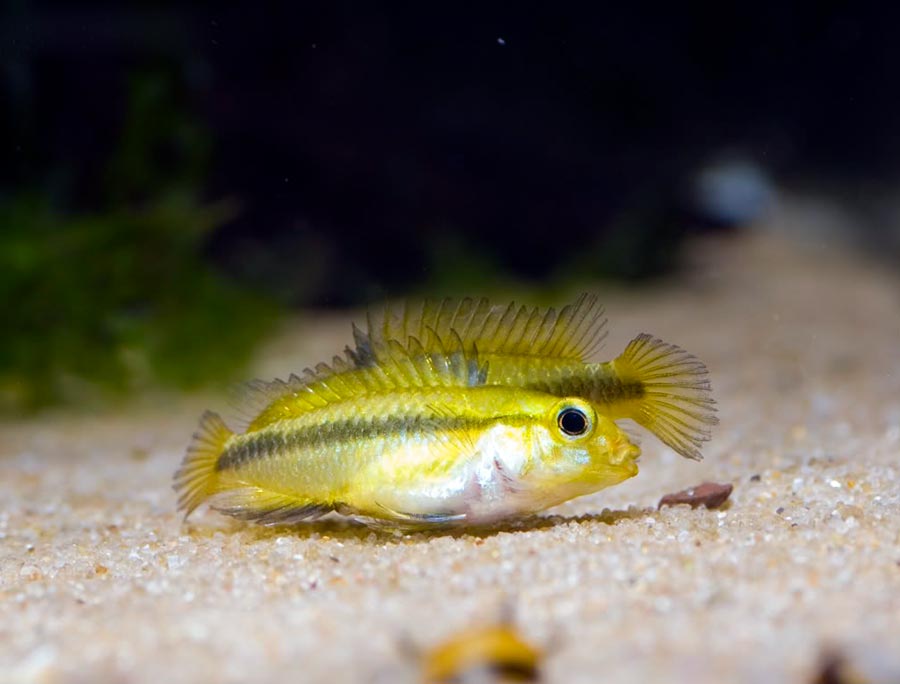
Males reach a length of up to 5 cm. The color is silvery with blue hues, the head is yellow. Females are smaller in size, about 4 cm. The color is yellow with a white belly. A characteristic feature of the body pattern are three black stripes. The first runs along the edge of the back, the second along the middle of the body, and the third along the lower part of the abdomen and anal fin.
Fish have minor differences depending on the specific region of origin, so professional pet stores add an index to the name indicating the exact location in nature. For example, indexes A205 or A206 indicate that the Apistograms originate from the Guapore river system near the border with Argentina.
Food
An omnivorous species, in a home aquarium it will accept most popular foods such as dry flakes, pellets, live or frozen brine shrimp, daphnia, bloodworms.
Maintenance and care, arrangement of the aquarium
The optimal size of the aquarium for a group of 2-3 fish starts from 40 liters. The design is arbitrary, but the most natural three-striped Apistogramma will look in an environment reminiscent of its natural habitat. To do this, you can use a sandy substrate and a few snags. If breeding is planned, then it is advisable to prepare shelters where the fish can organize masonry, for example, an ordinary ceramic pot turned over on its side, or a piece of PVC pipe, is quite suitable. The presence of aquatic plants is not necessary; shade-loving varieties are planted if desired.
Experienced aquarists often use the leaves of some trees, which are laid out on the bottom of the aquarium, to give the design a more natural look. An accompanying goal, and perhaps the main one, is to establish the chemical composition of water similar to the conditions in natural reservoirs. Leaves in the process of decomposition release tannins, the presence of which is evidenced by a change in the color of the water – it becomes brown. Read more in the article “Which tree leaves can be used in an aquarium.”
Like most other fish, they need stable water conditions, which must be maintained within a certain range of temperatures and hydrochemical values. To this end, the aquarium is equipped with all necessary equipment and regular maintenance is carried out. At a minimum, part of the water should be replaced with fresh water on a weekly basis, concentration levels of nitrogen cycle products (ammonia, nitrites, nitrates) should be monitored, organic waste (excrement, leftover feed) should be removed, equipment should be prevented, etc.
Behavior and Compatibility
Males are intolerant of each other, competition is especially aggravated during the spawning period. In a small aquarium, it is desirable to keep one male for several females. In large volumes, it is permissible to combine several males. Otherwise, it is a peaceful fish, able to get along with other non-aggressive species of comparable size.
Breeding / breeding
With the onset of the mating season, the male occupies a site at the bottom of the aquarium. In the presence of other males, fierce skirmishes for territory can occur between them. Females choose the most preferred male for them and accept courtship, after which they swim away and lay eggs in some kind of shelter, or in cracks or voids among the decor. Males usually do not take part in caring for offspring and continue to court free females.
Fish diseases
The main cause of diseases lies in the conditions of detention, if they go beyond the permissible range, then immunity suppression inevitably occurs and the fish becomes susceptible to various infections that are inevitably present in the environment. If the first suspicions arise that the fish is sick, the first step is to check the water parameters and the presence of dangerous concentrations of nitrogen cycle products. Restoration of normal/suitable conditions often promotes healing. However, in some cases, medical treatment is indispensable. Read more about symptoms and treatments in the Aquarium Fish Diseases section.



